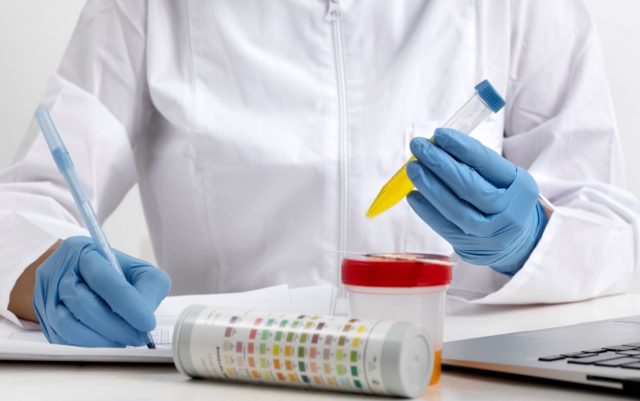Synthetic urine has become an increasingly popular substitution for the real thing when an actual human sample is required. As drug testing has grown more prevalent for employment, legal cases, and probation purposes, the best synthetic urine products have emerged seeking to mimic genuine pee’s look, chemical makeup, and ability to yield negative test results.
However, an evolving array of detection methods now threatens the believability of these fabricated solutions. And legal repercussions continue intensifying around fake sample usage despite no federal-level prohibitions in America yet. Still, legitimate medical needs combined with privacy concerns sustain the demand among some niche groups.
While synthetic urine remains unreliable for formally beating drug tests, it provides value for those requiring alternative waste solutions. Only through open and informed dialogue can society find an ethical balance on sensitive issues like alternative urine usage moving forward. And with technology constantly progressing, the coming years promise continued maturation in how we perceive and integrate phantom fluids.
The Rising Popularity of Synthetic Urine
There are a few key reasons behind the increased interest and usage of synthetic urine over the past decade:
Passing Drug Tests
The most common motivation for using synthetic urine is to pass an employment or probation drug test. By submitting a fake pee sample that contains no traces of illicit substances, users hope to test clean and avoid failing a drug test. This allows people to continue using banned substances like marijuana while outwardly appearing drug-free.
Embarrassing Health Issues
Some shy bladder sufferers report using synthetic pee to avoid the embarrassment and anxiety surrounding required urine testing. Social anxiety, paruresis, and medical conditions like incontinence can all make providing a urine sample extremely difficult. Synthetic urine offers an alternative.
Fetishes and Roleplaying
A small subset of synthetic pee consumers purchase it for fetish play and roleplaying. Some devotees use it for urolagnia or find excitement in the novelty of a synthetic sample. However, most customers seek fake pee for its usefulness in beating drug screening.
What’s Actually In Synthetic Urine?
Synthetic pee manufacturers aim to recreate the contents and composition of natural human urine as closely as possible. Common ingredients include:
- Water – Makes up over 90% of pee. Proper water balance is crucial for imitating dilution and appearance.
- Creatinine – A waste product from muscles that is tested to ensure sample validity and check for dilution.
- Urea – A high-concentration organic compound that contains nitrogen and is a byproduct of protein breakdown in the body.
- Uric acid – Formed during the breakdown of purines and helps regulate waste concentration.
- Electrolytes – Like sodium, chloride, potassium, calcium. Electrolyte levels can reveal sample validity.
- Coloring – Added yellow/amber colors to achieve a realistic urine hue without darkening over time.
By mixing the right quantities of these ingredients, synthetic pee aims to be indistinguishable from real fresh urine during testing.
With synthetic urine technology advancing, more people trust it to help them pass supervised and unsupervised pee tests. There are a few key ways people use fake pee to pass:
Unsupervised Collection
For unsupervised drug tests, the simplest method is to substitute the real urine sample for an artificial urine sample brought to the testing site. As long as the temperature and vital signs appear credible, the odds of detection are extremely low.
Smuggling
For supervised collection, various techniques exist for smuggling and hiding containers of clean urine. Methods include stashing them inside a prosthetic penis, bra, wig, or taping vials to the body. The key is keeping it near body temperature.
Microwaving
Some users report microwaving synthetic urine to simulate body heat before submitting their sample. If the temperature lands within an accepted range, the odds of detection drop substantially.
Adding To The Existing Sample
For users undergoing monitored testing, some attempt to dilute the real urine by adding synthetic urine to the collection cup. This aims to minimize drug traces. However, dilution can arouse suspicion if sample validity markers are off.
The internet offers an abundance of tips and tricks focused specifically on gaming urine tests with synthetic substitutes. But are these methods as reliable as they seem?
Just How Effective is Synthetic Urine?
When used properly, high-quality synthetic urine can be extremely effective at yielding negative lab test results.
The largest study on synthetic urine success rates to date was conducted by researchers at the University of Massachusetts. After evaluating over 21 different fake pee products from leading brands, they found that:
- 89% passed standard immunoassay screenings when engineered properly
- 94% passed validity testing that checks for sample integrity
- 96% generated negative GC-MS confirmation test results
With quality synthetic urine, very few chemical differences exist compared to real human urine samples. This makes detection unlikely when all other precautions are followed appropriately by the user.
However, problems can arise when:
- Cheap, low-quality products are used
- Proper heating methods fail or sample temperatures raise red flags
- Users fail to follow preparation procedures correctly
Synthetic samples must remain within an accepted temperature range, contain appropriate chemical levels, and appear as close to legit urine as possible to beat examiners. When flaws exist or protocol isn’t followed, suspicion is more likely to increase leading to further scrutiny or detected tampering.
Legal Consequences Around Synthetic Urine Use
While federal laws don’t prohibit synthetic urine or its usage directly, some states have begun implementing bans and repercussions targeting fake pee distribution and usage:
State-Level Bans
Over 15 states have enacted various legislation banning the sale, manufacturing, advertising, or use of synthetic urine products. Some, like Indiana, have even classified the fraudulent use of synthetic pee to pass a drug test as a misdemeanor offense.
Punishments can include fines up to $1,000 or even jail time in select areas for those caught using or possessing fake urine samples if local statutes forbid their usage.
Federal Worker and DOT Screenings
Additionally, the US Federal government bans providing anything other than a real biological sample when applying for competitive civil service positions. The Department of Transportation strictly forbids any specimen tampering or substitution by collectors and test-takers alike during their drug screening programs.
While the laws continue evolving surrounding synthetic pee, legitimate testing laboratories are ramping up their efforts to detect these sophisticated fakes using advanced validity screening that checks for biologically relevant markers.
How Are Synthetic Samples Detected by Drug Testers?
Laboratories have an arsenal of advanced validation methods for proving sample authenticity and spotting red flags. Here are some checks specifically targeting synthetic urine:
Sample Temperature
If synthetic urine cannot maintain a temperature between 90 and 100 degrees Fahrenheit, examiners get suspicious. Natural urine leaves the body near 98.6F.
Oxidants/Oxidation
Chemical testing can detect the presence of oxidizing agents used to maintain color consistency in artificial pee during storage.
pH Levels
If the pH is off from normal urine, it may indicate foreign adulterants within the submitted sample.
Biomarkers
Testing urine for unique human biomarkers like DNA or certain proteins can definitively identify fakes.
Microscopic Urinalysis
Experts examine urine under a microscope checking for the presence of cells, bacteria, and other natural microscopic biomarkers found in pee.
Advanced validity testing combined with experienced staff makes the odds of beating a test with fake pee substantially lower in regulated environments. Nonetheless, determining if use is worth the risk remains up to each user.
Safe Alternatives to Using Synthetic Urine
Rather than risk legal repercussions by using fabricated urine samples during drug tests, safer alternatives exist including:
Cleansing Detoxification
Natural cleansers and detox pills claim to flush out drug metabolites, aiming to help you pass using real urine. However, trustee research on reliability is lacking.
Dilution
Some methods advise drinking copious amounts of water to dilute metabolites below detectable levels. However, labs often test for dilution, making this method conspicuous.
Urinary Luck
Staying completely substance-free for 30+ days leading up to any pending urine screening gives real urine the greatest chance to appear clean and drug-free.
Hair Testing
In rare cases, some employers offer hair follicle testing instead which detects longer-term usage but usually won’t reveal one-time or recent substance use.
Ultimately, abstaining from drugs avoids the need for synthetic pee altogether. And medically supervised substance recovery programs prove helpful for those struggling with addiction or dependence long-term.
Getting Clean Without Fake Pee
Rather than risk legal repercussions by using fabricated urine samples during drug tests, safer alternatives exist including:
Cleansing Through Abstinence
Staying completely substance-free for 30+ days leading up to any pending urine screening gives real urine the greatest chance to appear clean and drug-free. This remains the most reliable way forward for those needing to get clean.
Medically-Assisted Detox
For those struggling with addiction, seeking professional medical help often proves the most effective and compassionate path. Substance recovery programs help create lasting change.
Alternative Testing
In rare cases, some employers offer hair follicle testing instead which detects longer-term usage but usually won’t reveal one-time or recent substance use.
Ultimately, abstaining from drugs avoids the need for synthetic pee altogether. And medically supervised substance recovery programs prove most helpful for those struggling with addiction or dependence long-term.
Conclusion
While synthetic urine technology continues advancing, so do the risks surrounding its usage. Legal repercussions combined with enhanced detection capabilities make passing drug tests with fake pee increasingly precarious for those determined to try. Still, the best synthetic urine retains value for niche groups in need of alternative waste solutions.

Speaks from heart, always too passionate and driven by emotions. Spins the words with kindness & sharpness, intriguing your ever-inscrutable minds.




